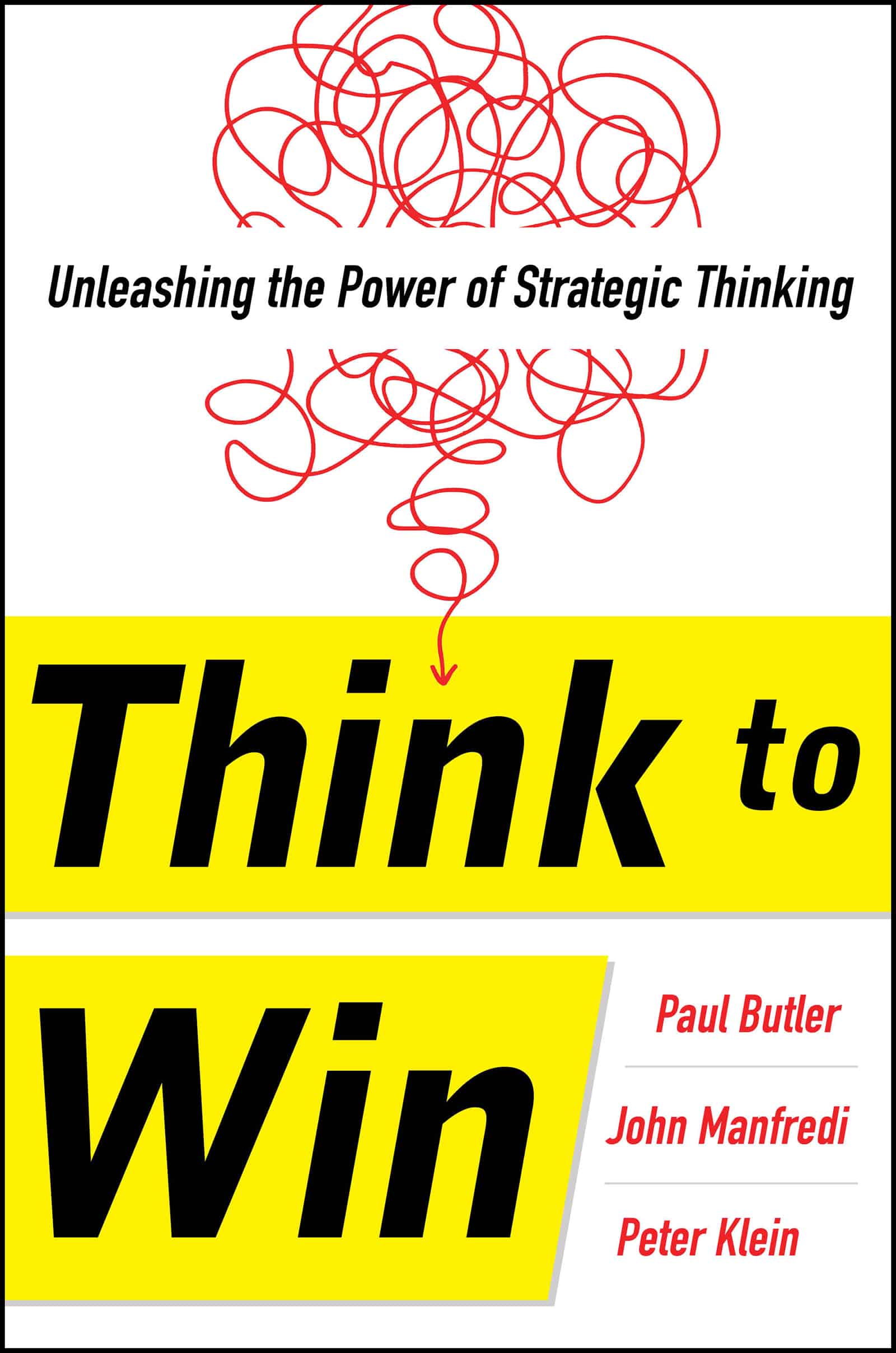The Art and Science of Building a Successful Business: An Interview with Paul Butler

Building a successful business is the goal of every entrepreneur. Paul Butler, one of the authors of the book Think to Win: Unleashing the Power of Strategic Thinking, recently suggested that business success is really a combination of art, science, and the ability to think strategically. He and his co-authors, John Manfredi and Peter Klein, are helping business owners understand that success is less about applying a system and more about a different way of thinking (it not only takes a disciplined approach—which alone is not enough—it requires a different way of thinking)
While many people talk about strategic thinking, I was impressed with their suggestions for how to think more strategically and some of the actionable things a business owner can apply to his or her business outlined in the book. After reading the book and talking to Butler, I’m convinced these guys are on to something.

Ty Kiisel: What was the motivation to write this book? What makes your take on strategic thinking something different that what we might have read before?
Paul Butler: The three of us had worked together in the corporate world and went our separate ways to pursue our own entrepreneurial ambitions. When we would get back together, we often discussed how many of the business owners we knew and worked with wanted to make more strategic decisions, but were making it more complicated than it needed to be. We wrote the book in an effort to demystify the concept of strategic thinking (Ty, the book was written for a business audience no matter the size—the principles are universal and happen to apply no matter what size your company is—I think they are even more important for a small business owner) and give the average person running a small business some practical things they can start doing within their business today, to think more strategically and make better decisions.
Ty: Are you saying that business owners need to rely exclusively on data and metrics?
Paul: We believe there is both art and science to making strategic decisions. There’s no question, business owners need good data to make good decisions, but it’s really about having the right data. What’s more, we not talking about complex data either. It starts by looking at what you know is true (in the marketplace), comparing it to what’s happening in your business, and looking at the data to get clarity. Once you have all the facts it’s much easier to make informed decisions—you can “follow your gut,” to use the vernacular. Most people do research before they buy a car; you need to do the same type of homework when you make business decisions. It helps you evaluate your options.

Ty: In your book you outline five fundamental principles that help business owners tackle strategic decision-making from a different paradigm. Would you outline two or three of them for us?
Paul: Of course. The five principles are 1) Challenge Assumptions, 2) Scope the Issue, 3) Rely on Facts and Data, 4) Focus on the Vital Few, and 5) Connect the Dots. The first is to Challenge Assumptions. In other words, don’t be afraid to look at something you always thought was true, and question whether it really is. For example, we mention a non-profit in the book that provided a variety of services to children and families. Over the years they had accumulated several properties that had become expensive to maintain—expensive enough that it put their financial viability at risk. They had to challenge the assumption that these properties were critical to their mission. In the end, they decided their service mission was more important than the properties that required a lot of capital to maintain, so they divested themselves and are now stronger than ever.
Ty: I think the fourth principle is probably my favorite. Explain what you mean by The Vital Few.
Paul: This principle is about focusing on the things that are the most important. While there may be 20 or 30 things that are important, a disciplined approach that focuses on the two or three things that are the most important is how you become successful. We like to say, “What can you do on Monday morning?”
You’re probably familiar with what’s sometimes called the 80-20 rule? Basically, 20 percent of the causes account for roughly 80 percent of the effect. (Ty we talk about how the 90/10 concept has replaced the it—which makes the vital few concept even more important than ever.) The challenge for many businesses is winnowing down the laundry list of things that should get addressed to the two or three things that must be addressed right now.
Ty: Let’s wrap up with, Connect the Dots. What do you mean?
Paul: There needs to be a clear line of sight between problem identification and the actions to be taken. Think of it in terms of the old real estate mantra, location, location, location. Your mantra should be linkage, linkage, linkage.
In the book we share the story of an auto parts manufacturer that wanted to reduce the costs of producing their parts, but despite the introduction of new robotic equipment, he wasn’t able to lower the cost of production or improve efficiency. To make a long story short, the retraining of employees to maximize the value of the new technology hadn’t taken place. He connected the dots by improving the technical training of his employees and after six months improved productivity by 30 percent.
Ty: This seems like a pretty common-sense approach. Why do we tend to make things more complicated than they really need to be?
Paul Butler: It’s really human nature. Most people want to achieve results as quickly as they can; which makes it difficult to take a step back and ask the simple questions, like, “What are we really trying to solve here?” What we’re suggesting is that we need to slow down, focus on the problem we’re trying to solve, and then act quickly. (In the long run you save yourself valuable time) the most important thing is to act quickly—remember, “What can we do on Monday morning?” When we’re teaching these principles to a group, we often challenge them to think about how they start applying the solution right away? What can they start work on as quickly as first thing Monday morning?
Ty: What advice do you have for the small business owners who may not have discovered your book yet, but are logging into their Amazon accounts right now?
Paul: No matter what size of business you lead, there are simple concepts and processes that will make thinking strategically a lot easier. There are worksheets and tools within the book to help, but the biggest key is to have the discipline to focus on and do what’s most important now.




